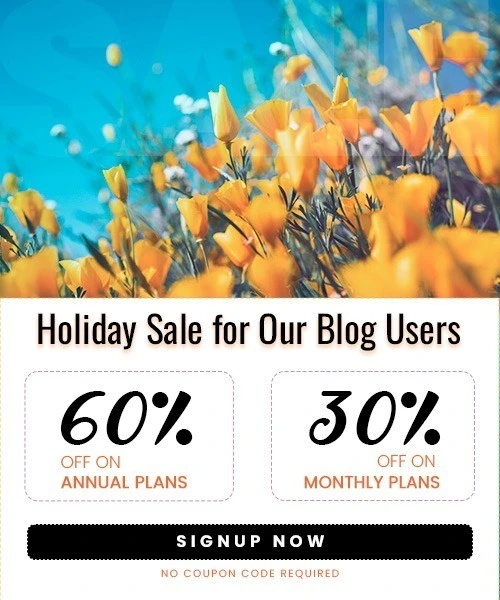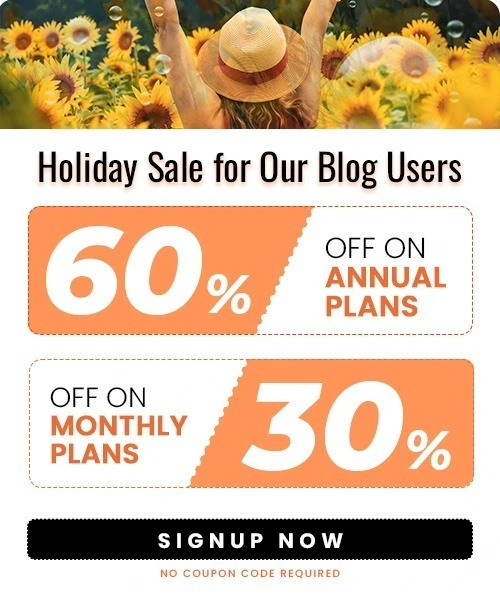10 Smart Ways to Promote Your Shopify Store
Last Updated on August 27, 2025 by Himanshu Rawat
Getting your first few sales after launching your Shopify store is an amazing milestone. The true difficulty starts at that point.
With more than 5 million active Shopify stores, it takes more than simply a fantastic product to stand out in a crowded market. In order to increase traffic, establish credibility, and turn visitors into devoted clients, you need a solid marketing plan.
In this guide, we’ll break down 10 effective ways to promote your Shopify store, even if you’re on a budget.
1. Make Your Store Search Engine Friendly (SEO)
Make sure all of your product descriptions, names, and photos are captivating and packed with keywords.
Make use of Shopify’s integrated SEO features, such as sitemaps and automatically created tags, to raise your store’s exposure on Google and other search engines. You can also work with an expert SEO agency to maximize your store’s visibility and ensure your SEO strategy is effective.
Make a blog with informative posts on your specialty. Well-written blog entries can build your authority and increase organic traffic.

Tips:
- Use keywords in product titles, meta descriptions, and ALT tags
- Create optimized blog content around niche topics
- Improve site speed and mobile-friendliness
- Build backlinks from reputable sites
Not sure what niche to pick? Explore high-demand Shopify product ideas to guide your content and store strategy.
2. Create and Divide Your Email List
1. Provide Alluring Rewards
Offer discounts or special content (such as “Get 15% off your first order”) in exchange for sign-ups using pop-ups, banners, or giveaways. To help with segmentation, gather interests during sign-up.
2. Send Emails That Are Rich in Value
Send a customized email to new subscribers to welcome them. Combine different kinds of content, such as customer testimonials, flash sales, product launches, and advice. Emails should be brief, have a single, obvious call to action, and contain links to stores and social media.
3. Personalization Segment
- Demographics: Adjust by location, gender, and age.
- Purchase History: Send emails recommending products or offering rewards, or refills.
- Engagement: Use exclusive offers to win back dormant users.
- Interests: Customize content based on survey or sign-up data.
- Source: Distinguish between messaging for in-person and online sign-ups.
4. Automate Crucial Processes
- Automate follow-up emails after a purchase, welcome emails, and reminders for abandoned carts. For triggers based on consumer behavior, use tools such as Shopify Flow.
5. Enhance Efficiency
Monitor and test conversions, click-throughs, open rates, and unsubscribes. To keep a healthy list, make unsubscribing simple.
6. Integrate SMS and Email
To increase reach and conversion potential, encourage subscribers to choose both channels.
Flow Example:
- Customers sign up by using the “10% off” offer. appear
- Greetings via email: Customized greeting + code + bestseller display
3. Use Social Media to Involve Your Audience
One of the most effective ways to raise brand awareness, traffic, and sales is to interact with your audience on social media. Here’s how to maximize it:

1. Be Where Your Audience Is
Keep up-to-date accounts on the social media sites that your target audience frequents the most, such as Facebook, Instagram, TikTok, Twitter, Pinterest, and other sites that are pertinent to your industry.
2. Distribute Diverse Interesting Content
- Post a variety of
- Interactive reels or stories
- Testimonials from customers
- Videos from behind the scenes
- Product demonstrations or guides
- Surveys, tests, and Q&A
3. Content created by users (inspire clients to tag your brand)
- Integrate Paid and Organic Approaches
- Utilize natural content to foster community and trust.
- Use paid advertisements to increase visibility—try:
- Carousel advertisements
- Ads for stories
- Influencer partnerships
- campaigns for retargeting
4. Make use of automation and scheduling tools like Outfy
- With Outfy, you can create, plan, and automate posts on all of the main platforms from a single location.
- Save time while preserving consistency and raising awareness of your brand.
- Get access to pre-made templates, suggested hashtags, and clever scheduling for the best times to engage.
4. Make a Paid Advertising Investment
To get traffic right away, run targeted pay-per-click (PPC) ads on Google, Facebook, Instagram, and Pinterest.
Retargeting advertisements, which target warm leads, have higher conversion rates and can be used to re-engage visitors who did not purchase during their initial visit.
Utilize tools such as Facebook Pixel to monitor the effectiveness of your campaigns and optimize for return on investment.
5. Start a Program for Referrals
- Make Your Referral Program Gamified: Create milestones or tiers to reward customers for referring others. For example, if a customer refers three friends, they will receive a larger discount or a free item.
- Incorporate Social Sharing: To expand the program’s reach, make it simple for users to send their referral links straight to social media sites, WhatsApp, or Messenger.
- Highlight Top Referrers: To promote healthy competition, publicly acknowledge or thank your most active referrers in your newsletter or on your website.
6. Collaborate with Influencers and Partners
- Micro-Influencer Campaigns: Work with several micro-influencers (1,000–10,000 followers) for authentic content and higher engagement rates, often at a lower cost. This works especially well for stores using the dropshipping model. If you’re considering this route, here’s a guide to how Shopify dropshipping works.
- Co-Create Limited Edition Products: Partner with an influencer or another brand to launch a limited-edition product or bundle, leveraging both audiences for maximum buzz.
- Podcast Collaborations: Appear as a guest on relevant ecommerce or niche podcasts, or sponsor podcast episodes to reach engaged, targeted listeners.
7. Leverage Content Marketing’s Power
- Interactive Content: Create interactive guides, calculators, or quizzes to assist consumers in making product selections and to gather useful email leads.
- Guest Blogging and Cross-Promotion: To increase your reach and boost SEO, write guest posts for industry blogs or partner brands and ask them to do the same for your website.
8. Join Facebook & Reddit Groups
Joining niche communities on Facebook and Reddit can be a powerful way to build trust, connect with your target audience, and subtly promote your brand—if done right. Here’s a clear guide on the do’s and don’ts to maximize your impact:
Do’s
- Be Active & Helpful: Share tips and advice related to your niche regularly.
- Soft Promote: Mention your brand only when it adds real value.
- Build Trust: Engage authentically to become a trusted voice in the community.
Don’ts
- Don’t Spam Links: Avoid posting links repeatedly or in unrelated threads.
- Don’t Hard Sell: Focus on conversations, not aggressive promotion. Let your value speak for itself.
9. User-Generated Content and Customer Reviews
1. Promote client testimonials
- Provide direct links to review pages in emails sent after a purchase.
- Provide rewards like loyalty points or discounts (like Sephora’s rewards for reviews).
- When sending thank-you notes or postcards, include review requests in the packaging.
2. Effectively Display Reviews
- Use apps like Yotpo or Fomo to display reviews on product and home pages.
- Post at least three to five testimonials on social media each month.
- Feature user-generated content (UGC) by reposting tagged customer photos (with permission).
3. Make Reviewing Simple and Incentives
- Make use of straightforward star-rated review forms.
- Automate review requests through thank-you pages, SMS, and email.
- Express gratitude and acknowledge reviewers in person or publicly.
4. Build a UGC-Driven Community
- Create branded hashtags to collect and share customer content.
- Run UGC contests to encourage creative submissions and boost engagement.
10. Analyze and Improve with Data
Constantly track and refine your strategy using:
- Shopify Analytics: Traffic sources, conversion rates
- Google Analytics: Deeper audience insights
- Hotjar or Lucky Orange: Heatmaps and user session recordings
This helps you identify what’s working—and where you’re losing sales.
Final Thoughts
Promoting your Shopify store is an ongoing process that requires creativity, consistency, and a willingness to test new ideas. By leveraging a mix of SEO, email marketing, social media, paid ads, influencer partnerships, and engaging content, you can significantly increase your store’s visibility and sales in 2025 and beyond.
Frequently Asked Questions
1. What’s the fastest way to get traffic to my Shopify store?
Running paid ads on platforms like Facebook, Instagram, or Google Shopping is the quickest way to drive targeted traffic.
2. Do I need a blog for my Shopify store?
Yes, blogging helps improve your SEO, builds trust, and attracts organic traffic over time.
3. What are the best Shopify apps for marketing?
Popular apps include Klaviyo (email), Smile.io (loyalty), and SEO Manager (SEO optimization).
4. How long does it take to see results?
Some tactics, like ads, can bring results in days, while SEO and content marketing may take a few months. Consistency is key.
5. Can I promote my Shopify store for free?
Yes! Free methods include SEO, social media, blogging, email marketing, and joining niche online communities.



